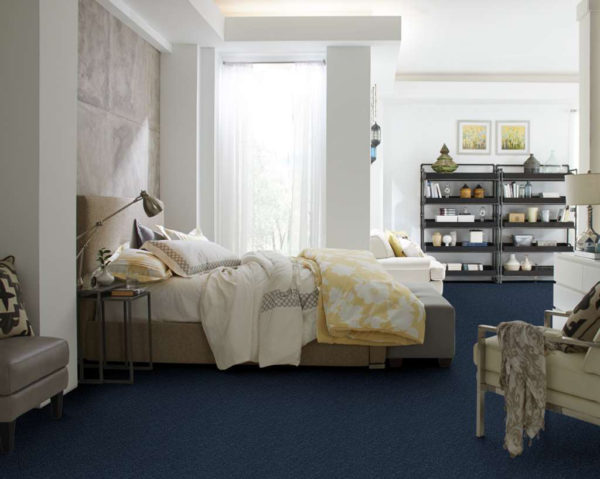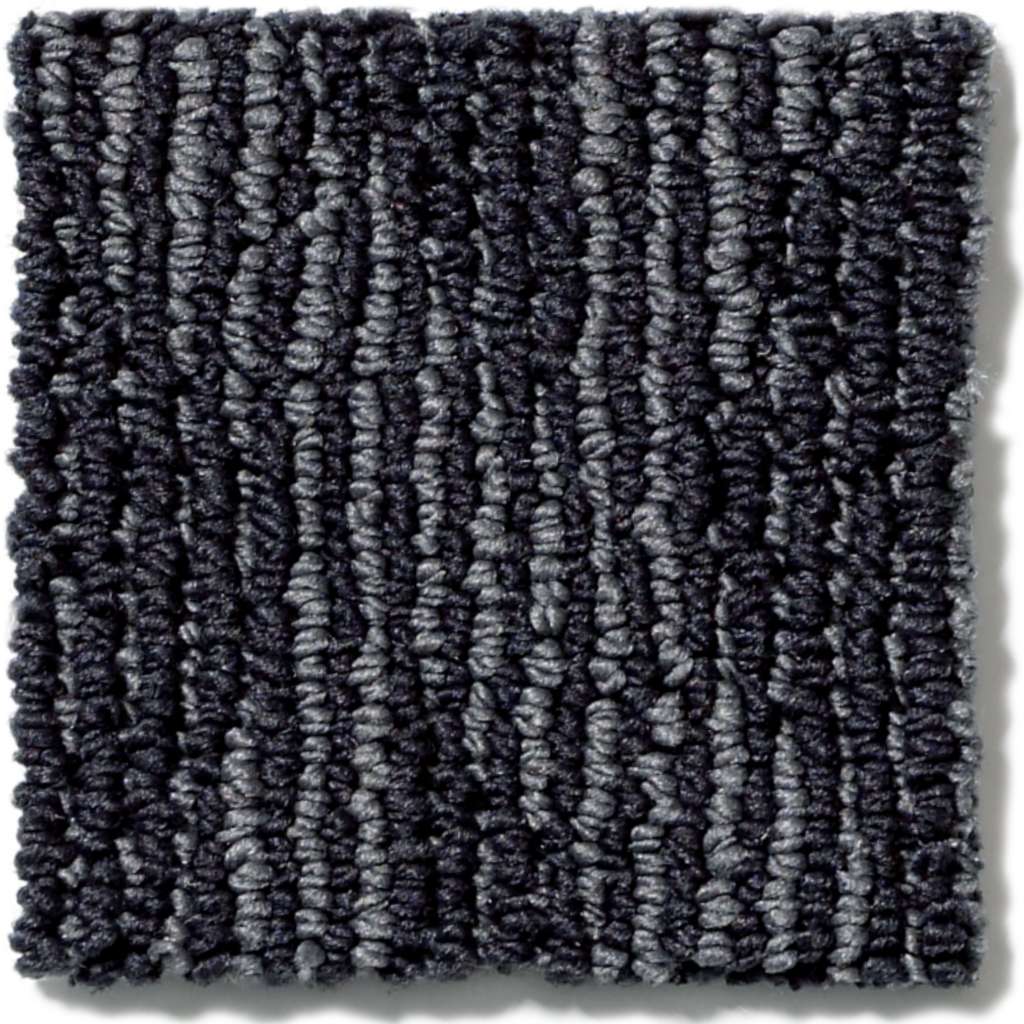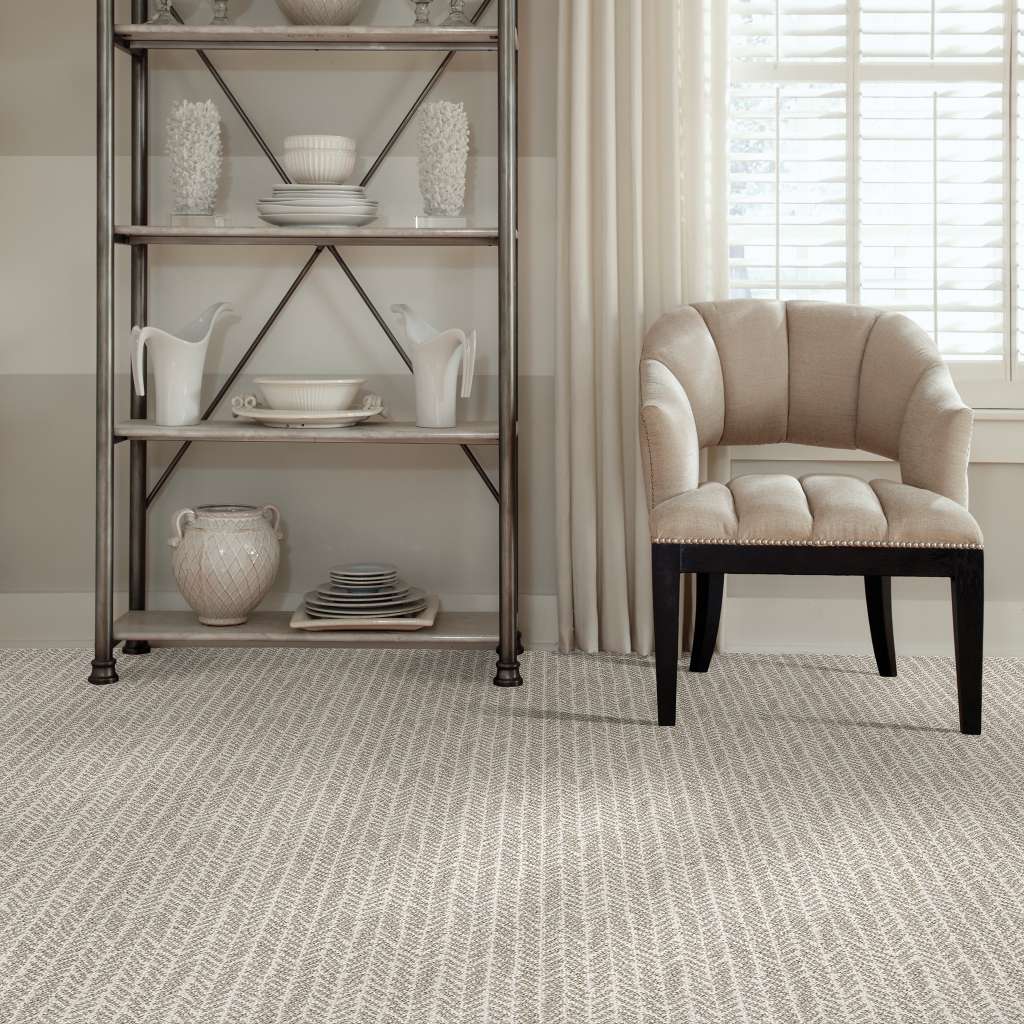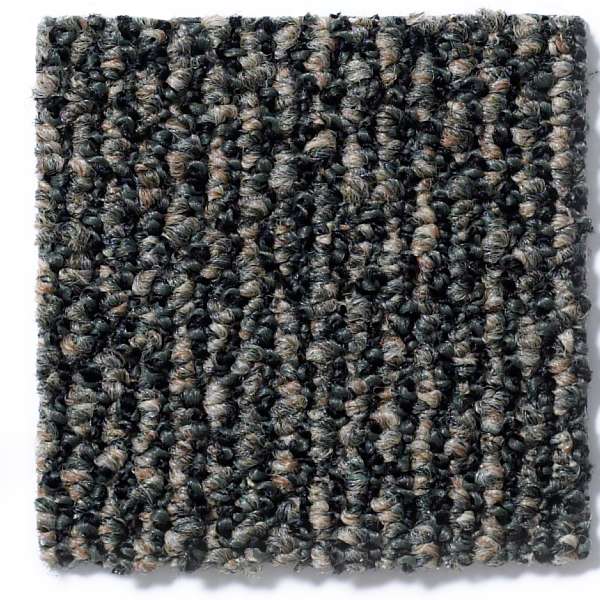The popularity of carpet has endured for decades because it is soft underfoot and creates a warm and inviting look. Preferred by many for bedrooms and kid spaces — especially on upper floors, where the cushioning helps deaden sound — carpet can also be a more economical choice than some hard surfaces.

Enjoy the Moment — in Ocean Reef Blue — is 100% Clear Touch Polyester, from Shaw Floors.
Another plus is that carpeting reduces allergens by capturing airborne particles and dust mites. Once trapped, they can be easily managed with regular cleaning and vacuuming.
And if you’re looking for quick updates to individual room decor, it’s easy to make a unique statement — for your teen or mother-in-law — with designer carpeting. Sophisticated grey tones are currently trending high, but if neutrals are not your preference, try incorporating shades of Classic Blue — 2020’s Color of the Year — in bedrooms, living spaces, guest suites or play areas.
Our design team can guide you in deciding from an extensive variety of styles, colors and patterns — from casual looks to elegant textures — and here is some info to help get you started.
CARPET FIBERS
Three fibers are currently popular in carpet manufacturing: nylon, polyester and polypropylene. They all have unique qualities and strengths.
Nylon:
The most commonly used fiber, nylon is also the most versatile in overall performance, providing excellent durability, resiliency and uniformity. Available in a wide variety of colors and styles — both cut and loop pile — many nylon yarns are also exceptionally soft. Although the fiber is not inherently stain-resistant, there are a variety of treatments for protection against spills and soil.
Polyester (aka “PET”):
Naturally stain and fade resistant, but not as versatile or durable as nylon, polyester offers exceptional softness and superior color clarity and vibrancy. Usually more affordable initially, it may not last as long as nylon, and is better suited for moderate to low traffic areas.
Polypropylene (aka “Olefin”):
Unlike other yarns, polypropylene will not absorb liquid dyes, so the color is built into the fiber when it is formed. This eliminates fading, even when exposed to harsh chemicals, atmospheric contaminants or intense sunlight. It is not as strong as other fibers, so it is commonly used in loop pile construction, where there is less need for resiliency.


A sophisticated and modern patterned loop that will add softness and style to your space, Free Spirited — made from 100% ANSO® nylon — offers warm neutrals, cool taupes and coveted blue-grays, including Newport Navy (shown here).


Lead the Way combines a timeless herringbone pattern with pronounced columns that highlight the differences in Snowfall’s color. Made from 100% high performance PET, the various combinations can range from subdued to dramatic, creating a truly unique floor.


Botanical, from Shaw’s Holiday line, is a great value — durable and affordable! It’s made in the USA from 100% Permacolor Olefin and the color is built right in — so it won’t fade, even in direct sunlight.
OTHER CONSIDERATIONS:
In addition to the type of fiber, there are other factors to consider when shopping for carpet — including density, construction, twist level and ounce weight. The experts at Sunset Design & Finishes have almost three decades of experience navigating the numerous options and combinations, and we will help you choose carpeting that you’ll enjoy for years to come.
CLEANING AND MAINTENANCE
Last but not least, good results are “all about developing a routine,” according to the Carpet and Rug Institute. CRI has developed the carpet industry’s only system that scientifically tests and measures the effectiveness of cleaning products and equipment. Their Seal of Approval program (SOA) helps consumers make informed decisions and encourages manufacturers to improve their products.
CRI recommends the following steps for cleaner, healthier and longer-lasting carpet:
- Vacuum regularly — and more frequently in high-traffic areas — using an SOA-certified vacuum.
- Clean spots and spills quickly with SOA-certified solutions that do not damage the carpet or cause it to resoil quicker.
- Professionally deep clean your carpets every 12 to 18 months to remove embedded dirt and grime. SOA-certified cleaners are recommended (and sometimes required by the manufacturer).
- Stop dirt at the door by using mats outside and in, taking your shoes off when you enter the house and changing your air filters to reduce airborne dust particles.
More tips on carpet care can be found here. All images are provided courtesy of our preferred partner, Shaw Floors.
